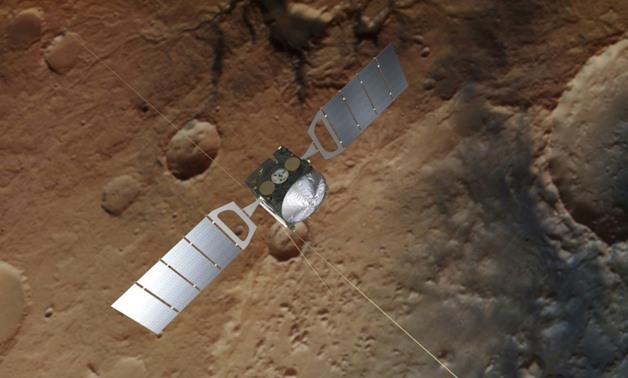
A photograph obtained from the European Space Agency on July 25, 2018, shows an artist's impression of Mars Express over a background based on an actual image of the Red Planet taken by the spacecraft
26 July 2018: A massive underground lake has been detected for the first time on Mars, raising hopes that more water -- and maybe even life -- exists there, international astronomers said Wednesday.
Located under a layer of Martian ice, the lake is about 12 miles (20 kilometers) wide, said the report led by Italian researchers in the US journal Science.
It is the largest body of liquid water ever found on the Red Planet.
"Water is there. We have no more doubt," co-author Enrico Flamini, the Italian space agency's Mars Express mission manager, told a press conference.
Mars is now cold, barren and dry but it used to be warm and wet. It was home to plenty of liquid water and lakes at least 3.6 billion years ago.
Scientists are eager to find signs of contemporary water, because such discoveries are key to unlocking the mystery of whether life ever formed on Mars in its ancient past, and whether it might persist today.
"This is a stunning result that suggests water on Mars is not a temporary trickle like previous discoveries but a persistent body of water that provides the conditions for life for extended periods of time," said Alan Duffy, an associate professor at Swinburne University in Australia, who was not involved in the study.
Being able to access water sources could also help humans survive on a future crewed mission to Earth's neighboring planet, with NASA aiming to send explorers in the 2030s.
This particular lake, however, would be neither swimmable nor drinkable, and it lies almost a mile deep (1.6 kilometers) beneath the icy surface in a harsh and frigid environment.

Comments
Leave a Comment